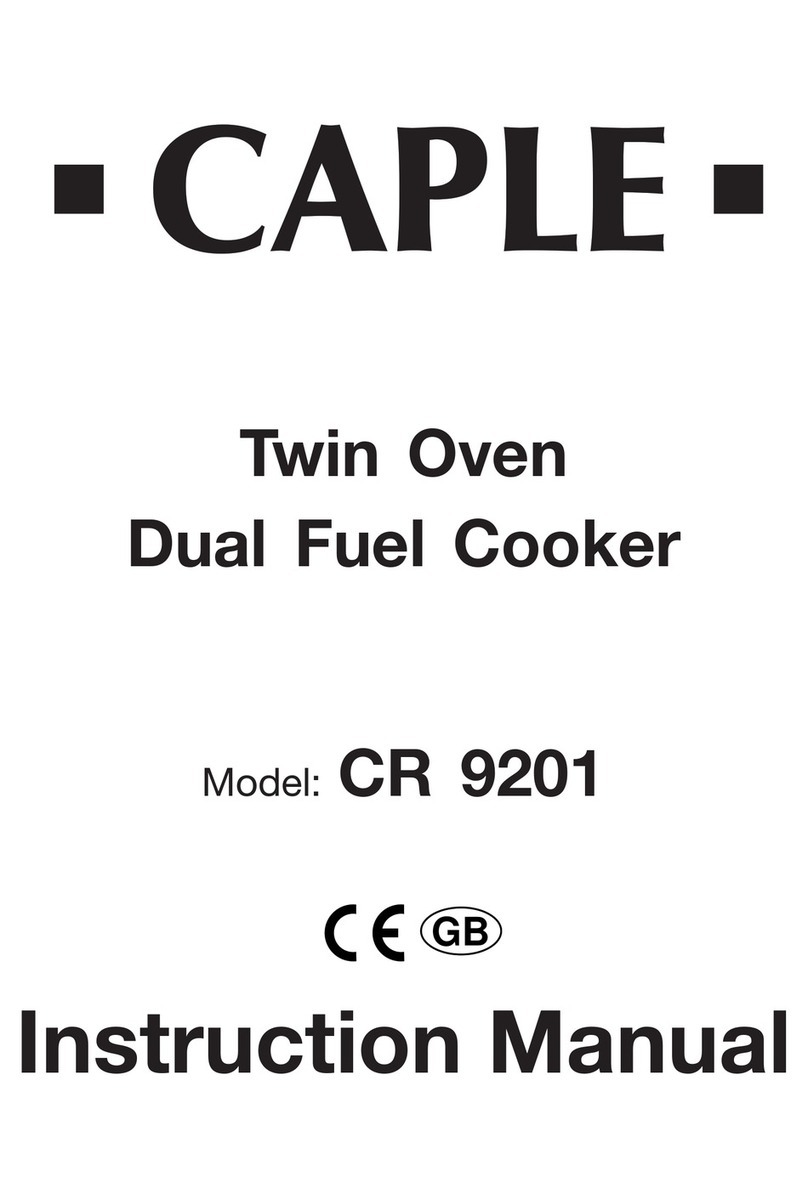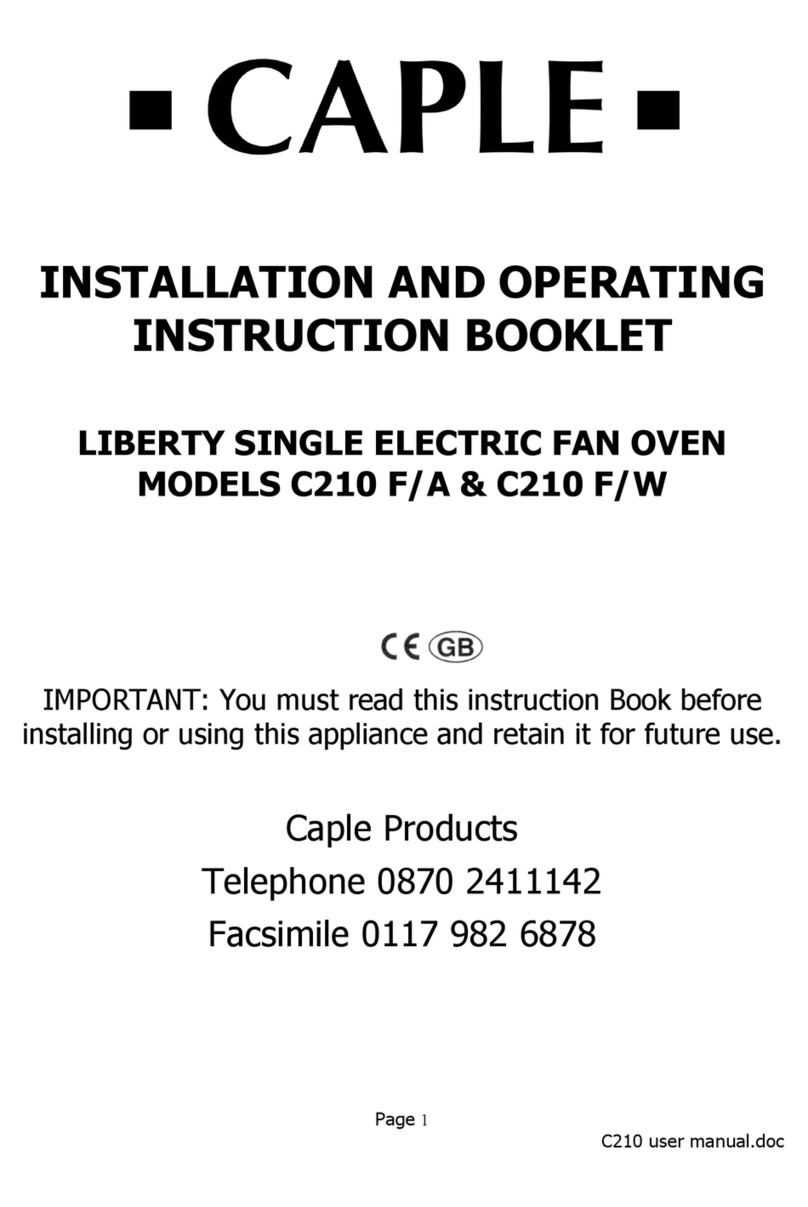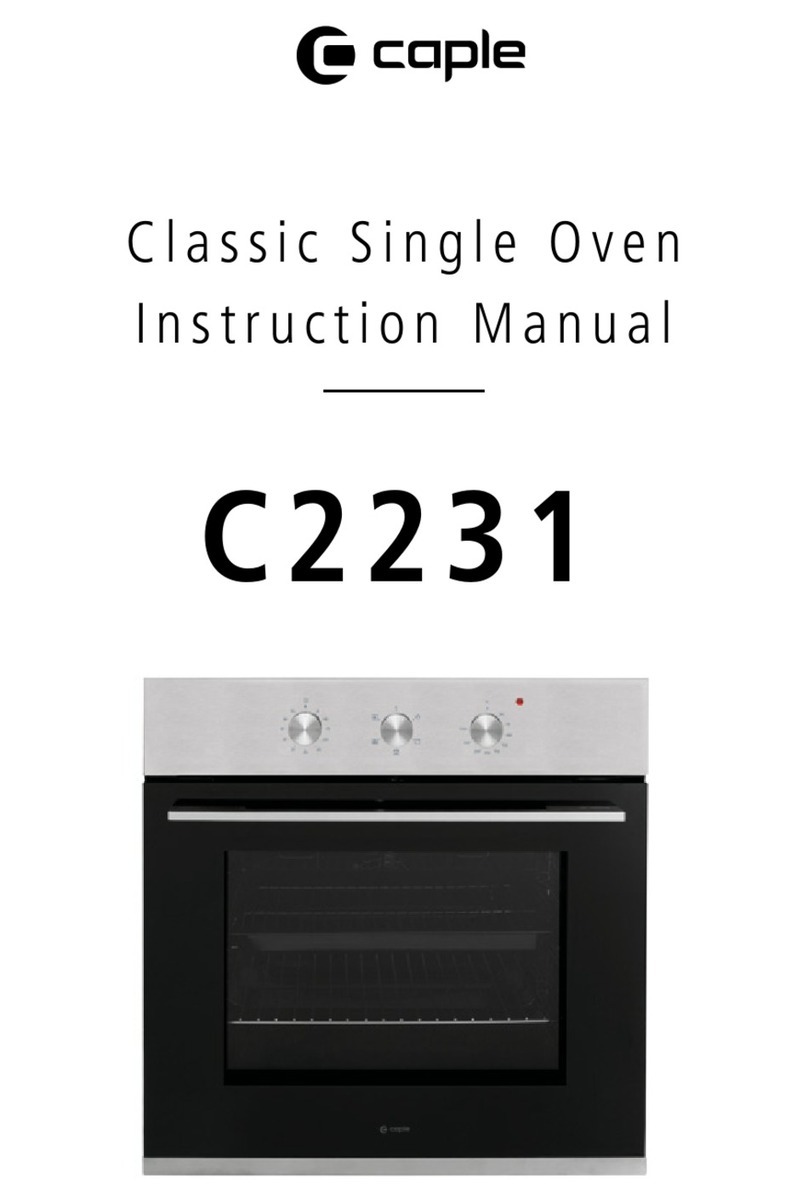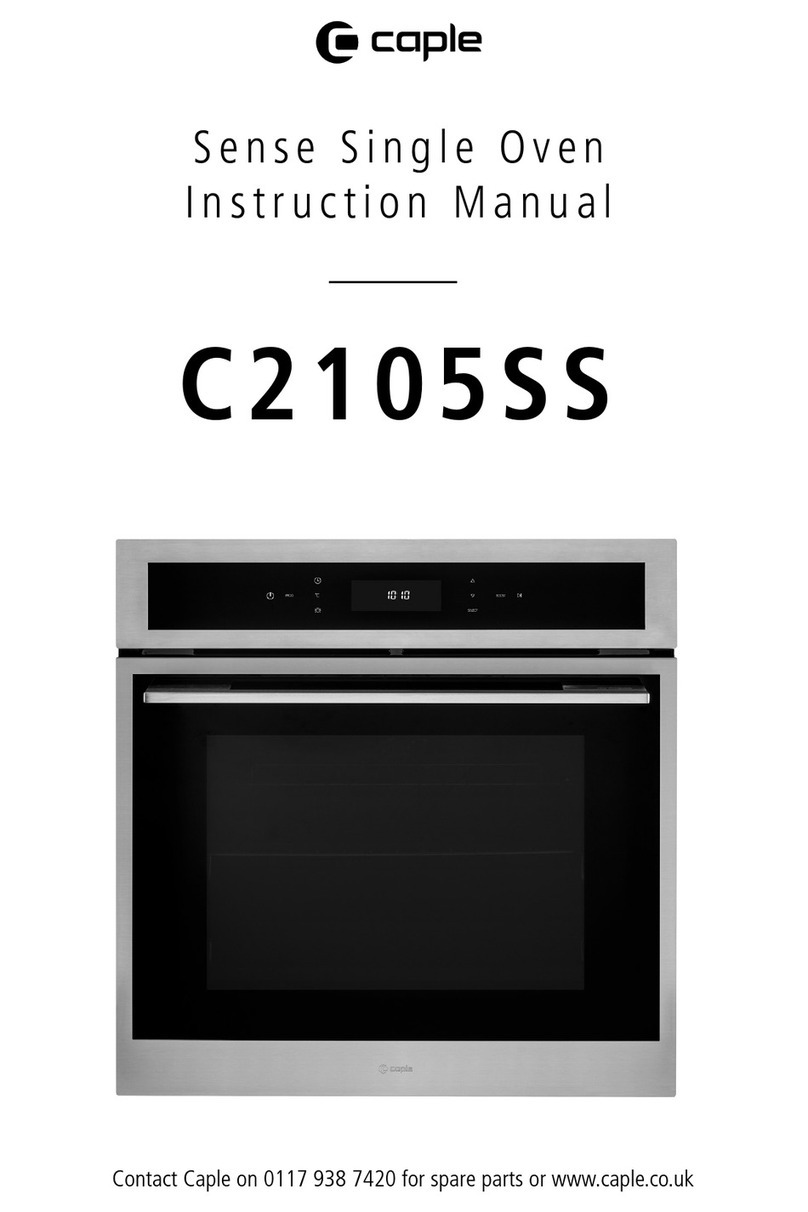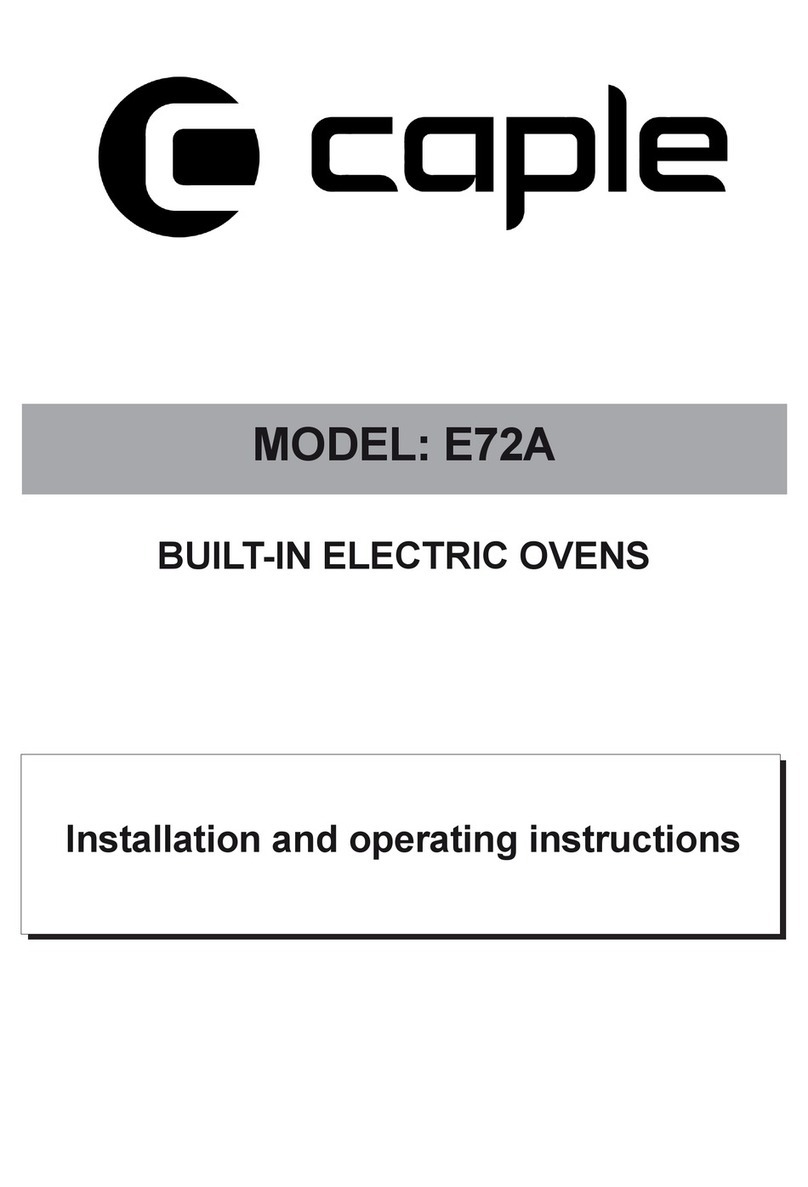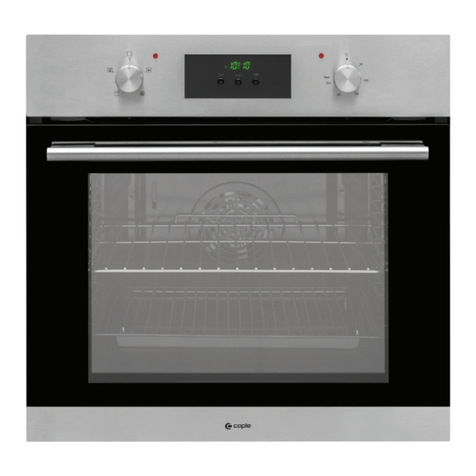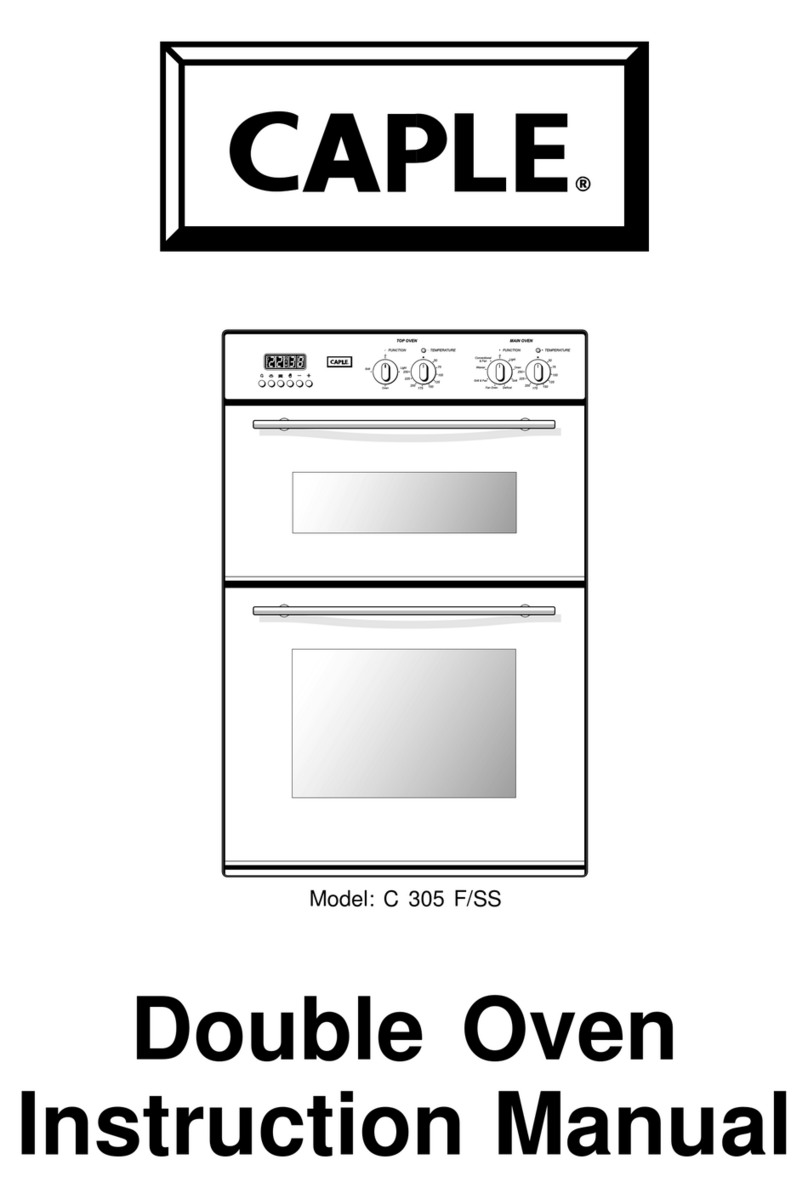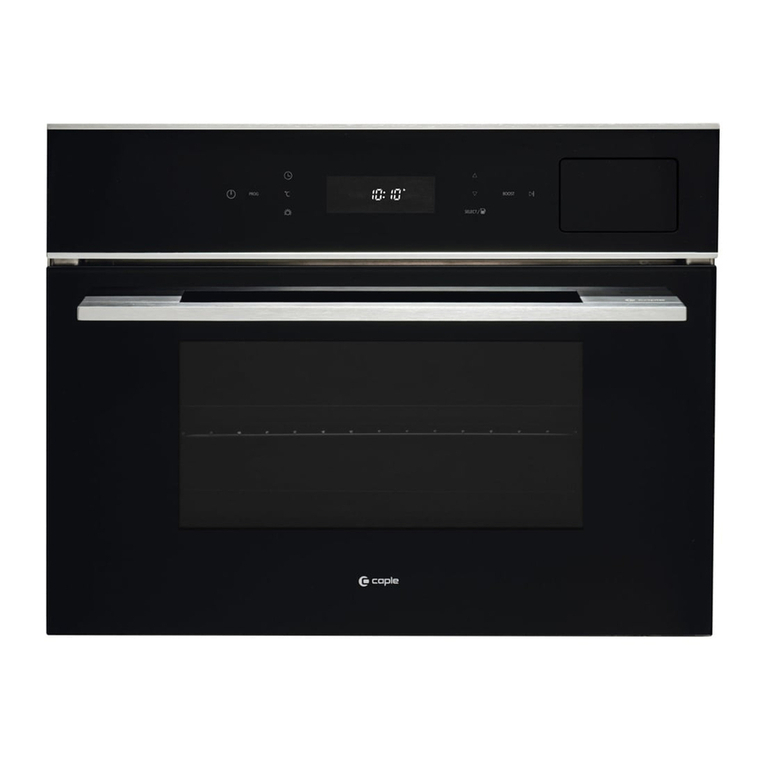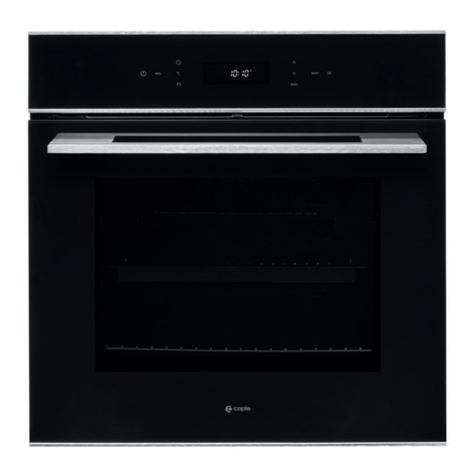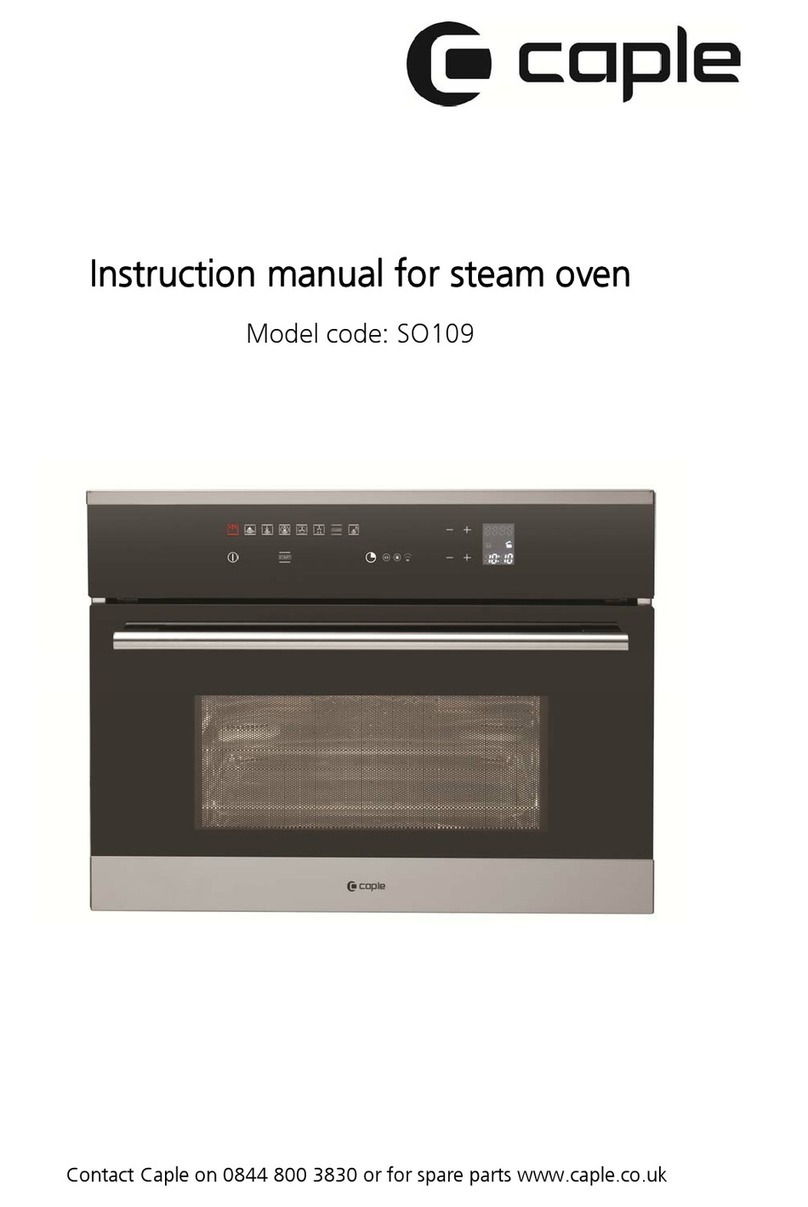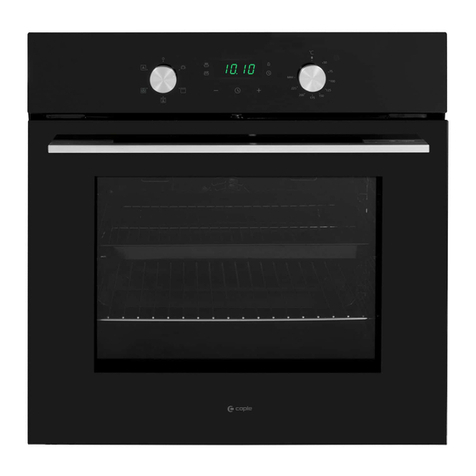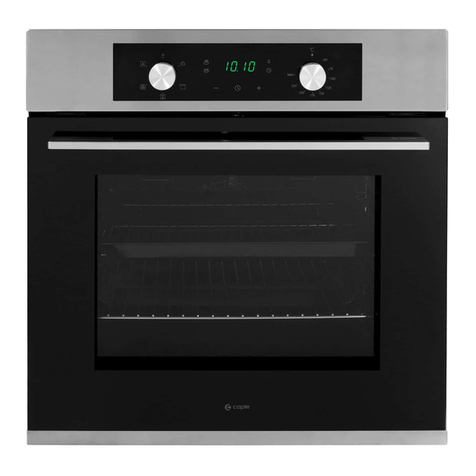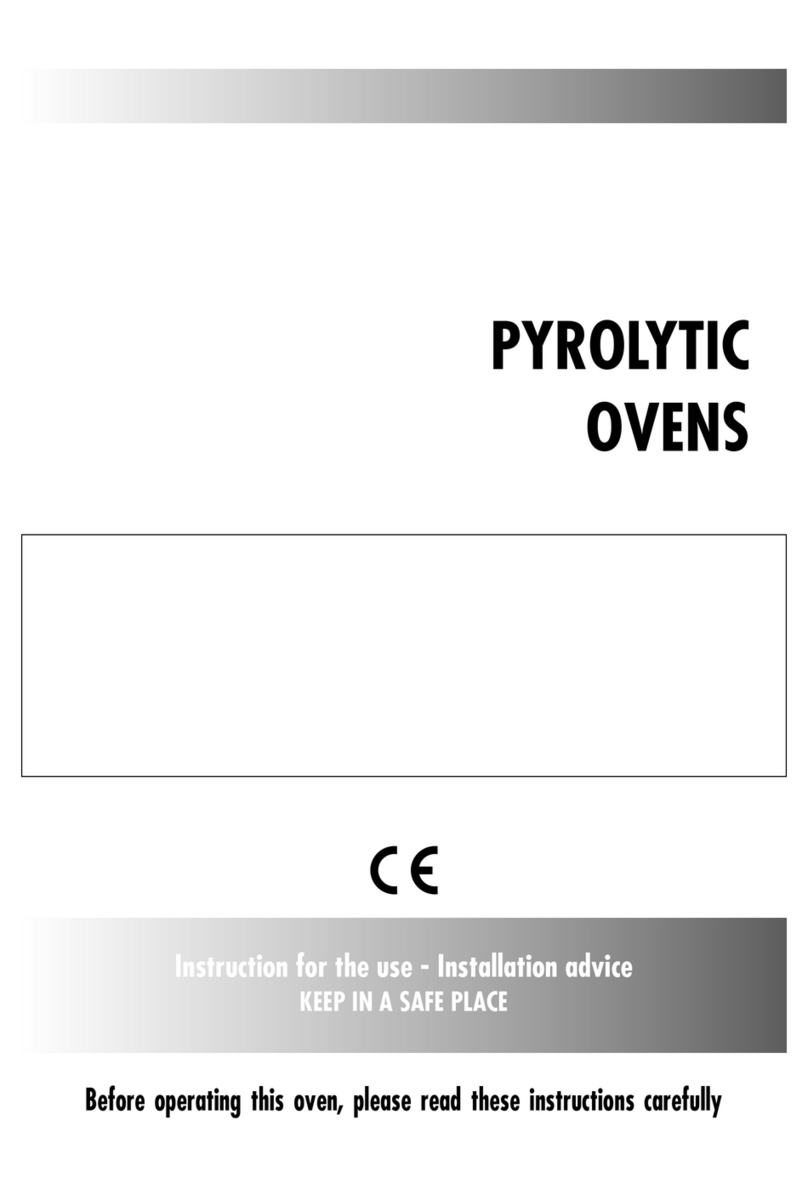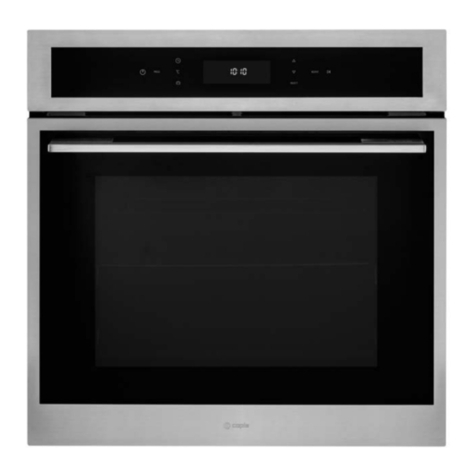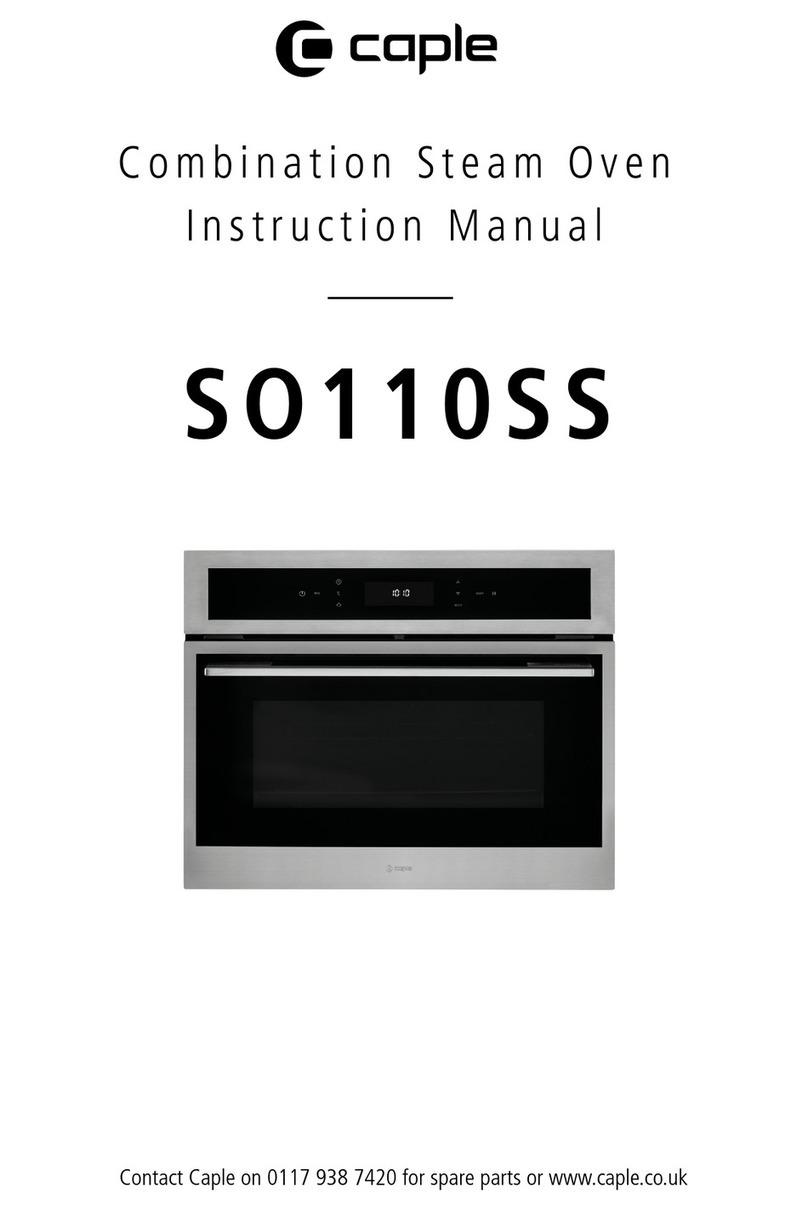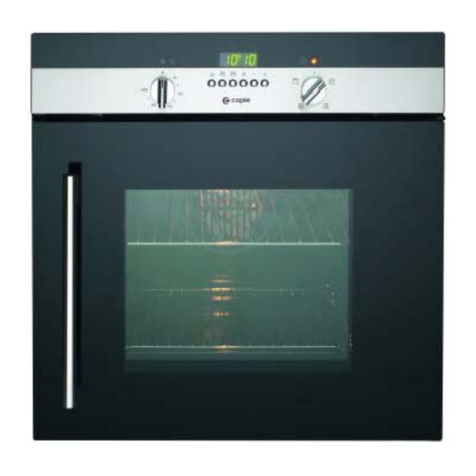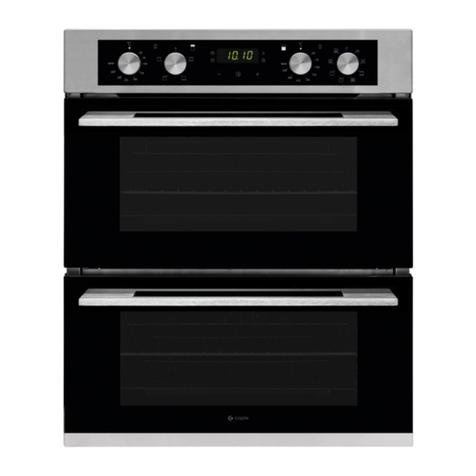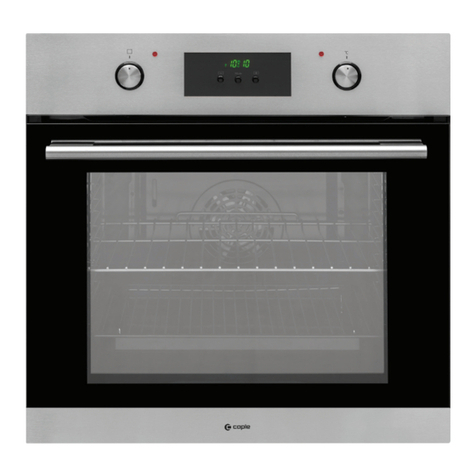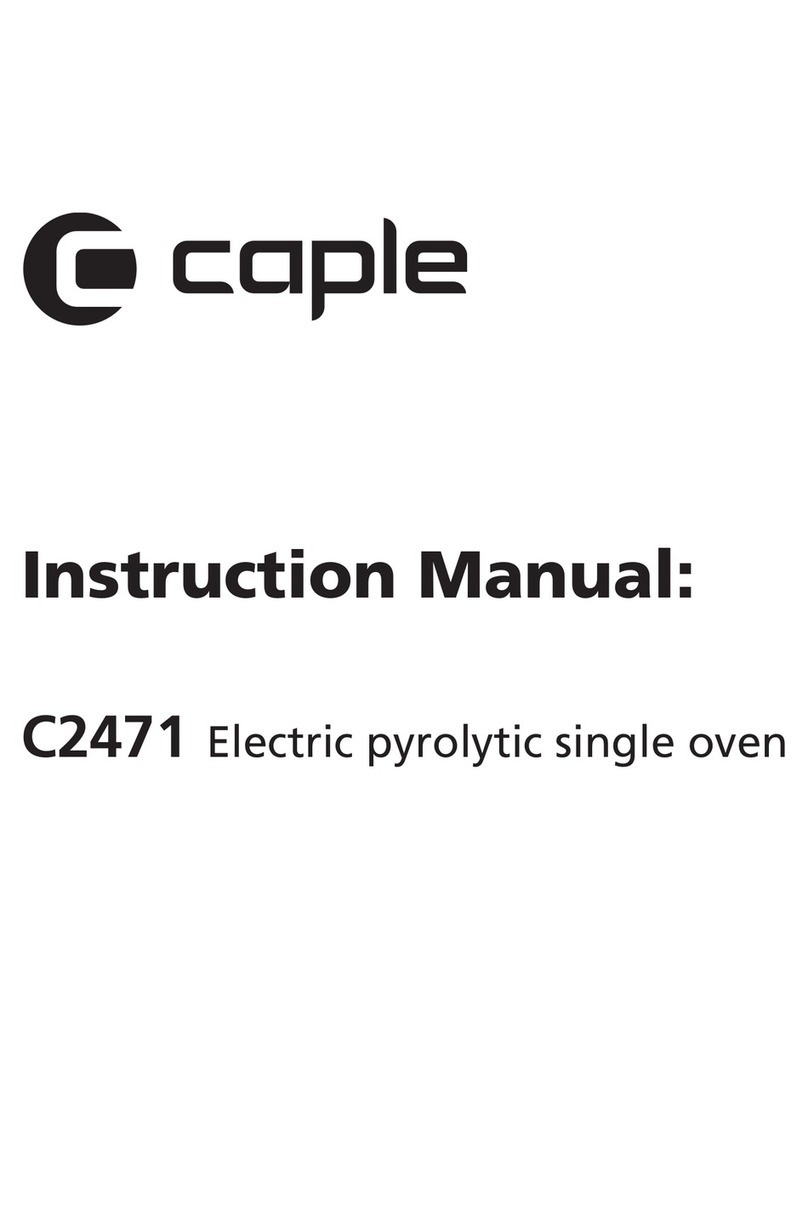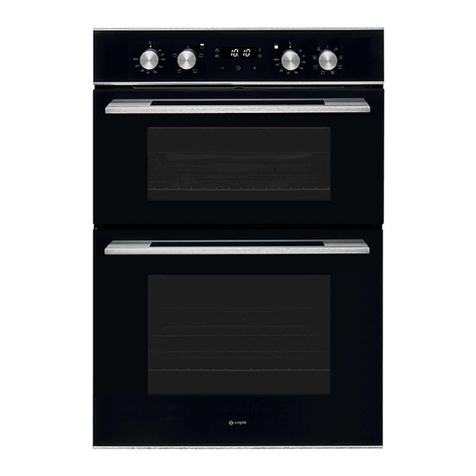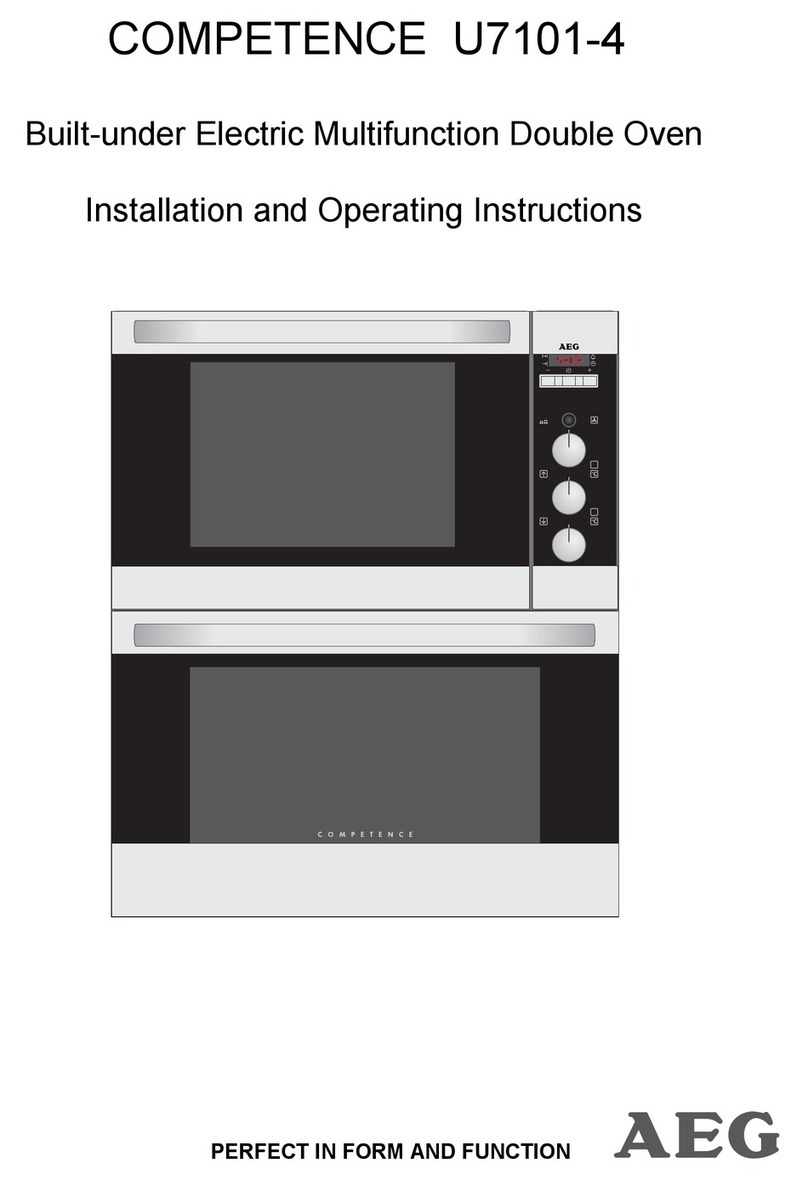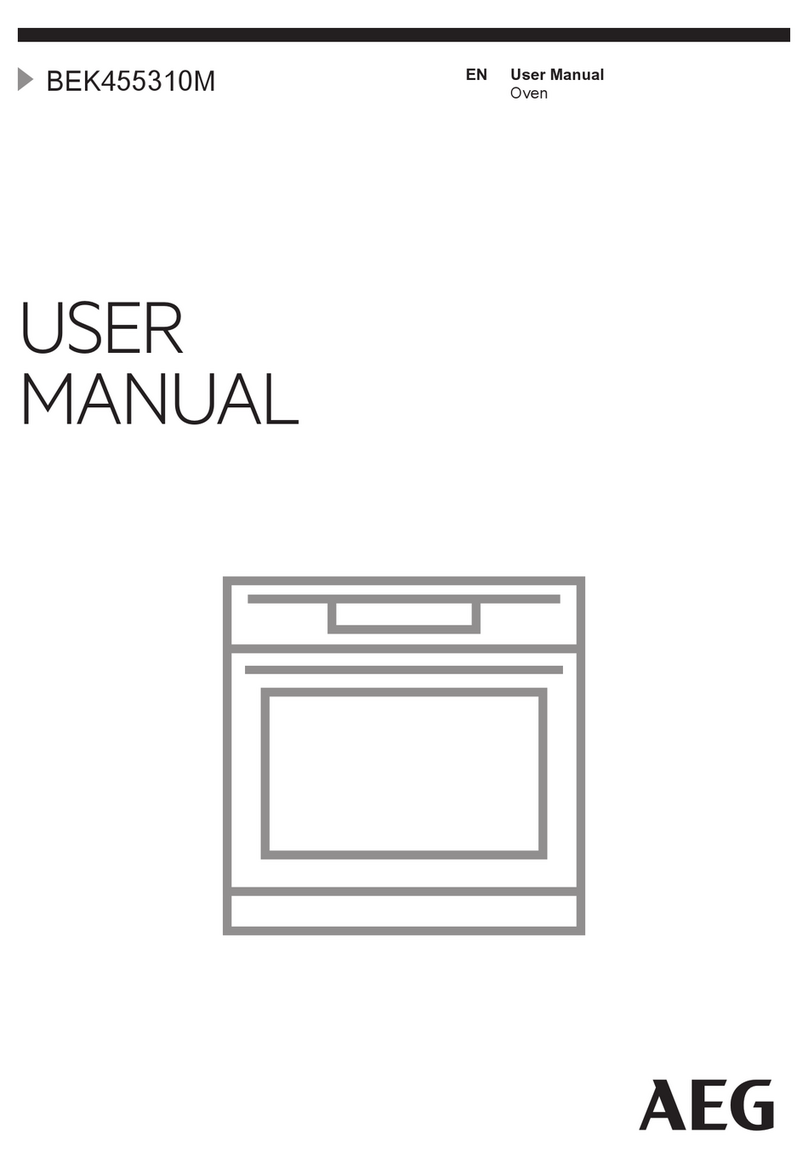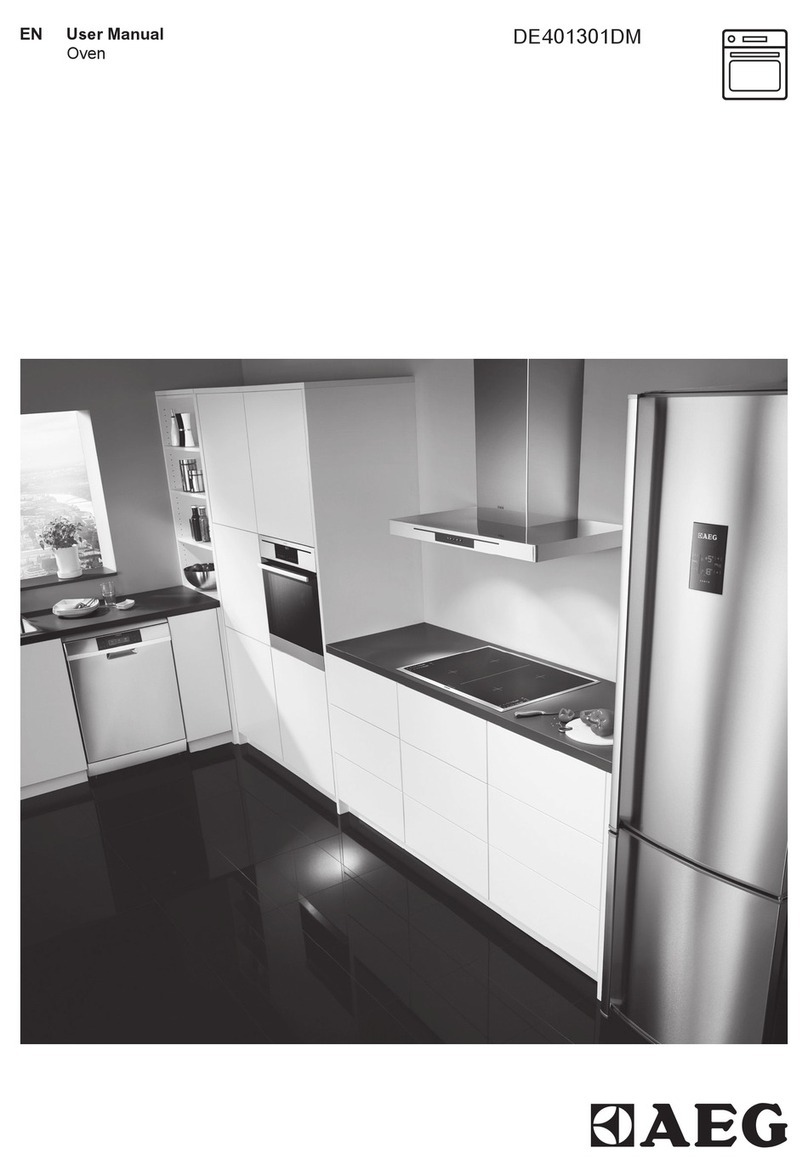
4.
COOLING FAN PROBLEM
4.4 CONVECTION FAN PROBLEMS
4.5 OVEN LIGHT PROBLEMS
4.6 DISPLAY PROBLEMS
4.7 DOOR HINGES PROBLEMS
4.8 BAD COOKING PERFORMANCE
4.9 STEAM PROBLEM
7. COMPONENT REPLACEMENT AND ADJUSTMENT PROCEDUR
7.1 OVEN REMOVAL
7.2 COOLING FAN MOTOR SUBSTITUTION
7.3 OVEN DOOR REMOVAL
7.4 CONVECTION FAN MOTOR SUBSTITUTION
7.5 RING ELEMENT SUBSTITUTION
7.6 GRILL ELEMENT SUBSTITUTION
7.7 BOTTOM ELEMENT SUBSTITUTION
7.8 DOOR GASKET SUBSTITUTION
7.9 SAFETY THERMOSTATS SUBSTITUTION
7.10 TEMPERATURE PROBE SUBSTITUTION
7.11 DOOR HINGES SUBSTITUTION
7.12 ELECTRONIC CONTROL BOARD SUBSTITUTION
7.13 LIGHT BULB SUBSTITUTION
7.14 LOAD & DRAIN PUMP SUBSTITUTION
7.15 STEAM GENARATOR SUBSTITUTION
7.16 WATER SOFTENER SUBSTITUTION
7.17 WATER COUNTER SUBSTITUTION
7.18 DOOR SENSOR SUBSTITUTION
7.19 DOOR EXTERNAL GLASS SUBSTITUTION
7.20 DOOR MIDDLE GLASS SUBSTITUTION
7.21 DOOR INTERNAL LABYRINTH GLASS SUBSTITUTION
7.22 DOOR INTRENAL LABYRINTH GLASS GASKET SUBSTITUTION
7.23 GLASS CONTROL PANEL SUBSTITUTION
7.24 DOOR MAGNET SUBSTITUTION

